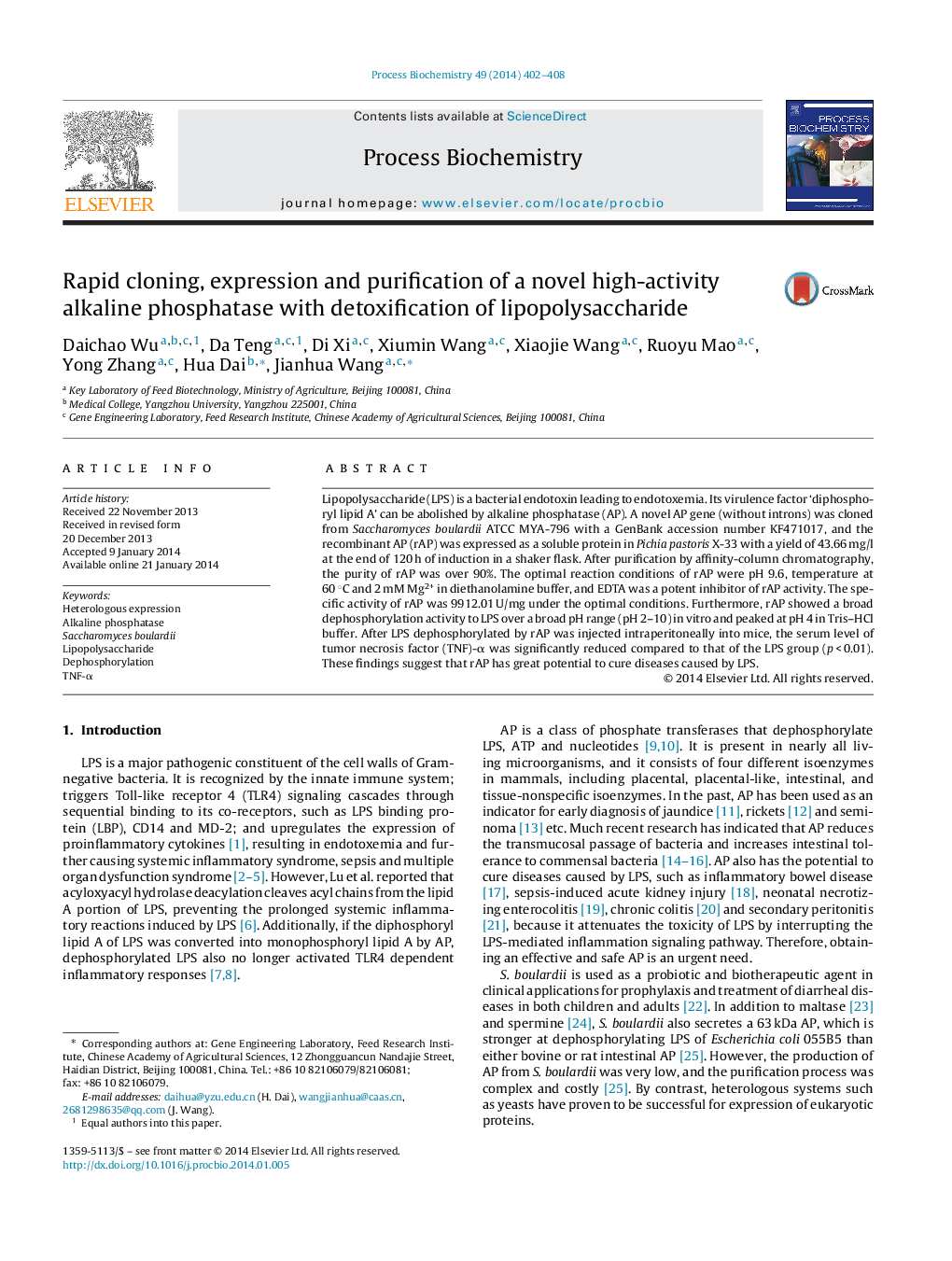| Article ID | Journal | Published Year | Pages | File Type |
|---|---|---|---|---|
| 10235451 | Process Biochemistry | 2014 | 7 Pages |
Abstract
Lipopolysaccharide (LPS) is a bacterial endotoxin leading to endotoxemia. Its virulence factor 'diphosphoryl lipid A' can be abolished by alkaline phosphatase (AP). A novel AP gene (without introns) was cloned from Saccharomyces boulardii ATCC MYA-796 with a GenBank accession number KF471017, and the recombinant AP (rAP) was expressed as a soluble protein in Pichia pastoris X-33 with a yield of 43.66 mg/l at the end of 120 h of induction in a shaker flask. After purification by affinity-column chromatography, the purity of rAP was over 90%. The optimal reaction conditions of rAP were pH 9.6, temperature at 60 °C and 2 mM Mg2+ in diethanolamine buffer, and EDTA was a potent inhibitor of rAP activity. The specific activity of rAP was 9912.01 U/mg under the optimal conditions. Furthermore, rAP showed a broad dephosphorylation activity to LPS over a broad pH range (pH 2-10) in vitro and peaked at pH 4 in Tris-HCl buffer. After LPS dephosphorylated by rAP was injected intraperitoneally into mice, the serum level of tumor necrosis factor (TNF)-α was significantly reduced compared to that of the LPS group (p < 0.01). These findings suggest that rAP has great potential to cure diseases caused by LPS.
Keywords
Related Topics
Physical Sciences and Engineering
Chemical Engineering
Bioengineering
Authors
Daichao Wu, Da Teng, Di Xi, Xiumin Wang, Xiaojie Wang, Ruoyu Mao, Yong Zhang, Hua Dai, Jianhua Wang,
